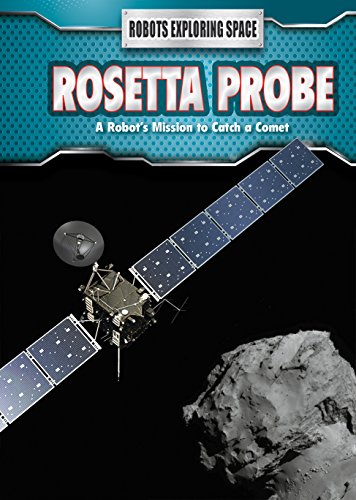-
Black Holes
Amanda Davis
Hardcover (PowerKids Press, Jan. 1, 2003)With video and computer games, sitcoms, and the mall, many kids have been prematurely distracted from asking some of the larger questions and exploring what we already know about the universe. This new series awakens a sense of awe at the magnitude of outer space and its mysteries. O
O
-
New Horizons: A Robot Explores Pluto and the Kuiper Belt
James Bow
Paperback (PowerKids Press, Aug. 15, 2016)Space missions take years to plan. But they also take years to execute, so special robots are used to study deep space instead of astronauts. Pluto is so far away, the New Horizons probe took 10 years to get there. The main content describes the amazing technology used to build the probe as well as what tools it uses to study Pluto and the Kuiper Belt. Informative sidebars introduce the scientist who discovered Pluto and other fascinating STEM information. Full-color photographs and diagrams show off the coolest parts of the robot and the photos and data its collected. R
R
-
The Planets
Martha E. H. Rustad
Paperback (Capstone Press, Jan. 1, 2002)Introduces the planets in our solar system including Earth, Mercury, Venus, Jupiter, Mars, Neptune, Saturn, Uranus, and Pluto. I
I
-
Mars Probes: Robots Explore the Red Planet
Kelly Spence
Paperback (PowerKids Press, Aug. 15, 2016)In 1976, Viking 1 became the first spacecraft from Earth to land on Mars. For the first time, scientists were able to see the surface of the red planet. Since then, NASA and other space organizations have sent other probes to Mars and have learned a lot. Readers find out all about the robots created especially for the task of exploring Mars through detailed diagrams, full-color photographs, and interesting main content. Including information about STEM careers and the background of planning a space mission using robots, this book engages readers with exciting STEM content and careers. U
U
-
Geography, Grades 4 - 5
American Education Publishing
Paperback (American Education Publishing, Jan. 3, 2012)Geography, a comprehensive learning resource, provides high-interest, full-color lessons to spark students’ interest and encourage critical thinking. The hands-on activities relative to state, regional, and global geography, while step-by-step map-building and comprehensive review pages give young learners the practice they need for success in this key subject area. A complete answer key to measure performance is also included, as well as a fun sticker sheet and poster. Q
Q
-
Demoting Pluto: The Discovery of Dwarf Planets
Stephen John Kortenkamp
Paperback (Capstone Press, Aug. 1, 2015)When is a planet not a planet? Dwarf planets orbit the sun, are solid bodies, and are not moons. But they are not considered regular planets. Learn more about these spherical oddities and why Pluto is still hotly debated today. U
U
-
Space Stations
Jenny Fretland VanVoorst
Library Binding (Jump!, Aug. 1, 2016)In Space Stations, early fluent readers learn about how space stations are constructed and what they are used for. Vibrant, full-color photos and carefully leveled text engage young readers as they learn about these fascinating research stations orbiting our planet. O
O
-
The Planets
Patricia Whitehouse
Paperback (Heinemann, Aug. 16, 2004)This introduction to our solar system shows a diagram of all the planets, then goes into detail about each planet. Full color photographs from NASA show each planets unique characteristics. S
S
-
Artificial Satellites
Jenny Fretland VanVoorst
Library Binding (Jump!, Aug. 1, 2016)In Artificial Satellites, early fluent readers learn about the construction and function of a variety of artificial satellites. Vibrant, full-color photos and carefully leveled text engage young readers as they learn about the fascinating man-made objects orbiting our planet. I
I
-
Rosetta Probe: A Robot's Mission to Catch a Comet
Robert Snedden
Paperback (Powerkids Pr, Aug. 15, 2016)Rosetta isnt the first probe thats been sent to study comets, but its the most successful as the first spacecraft to closely observe a comet as it approaches the sun. For 10 years, Rosetta moved around the solar system, just so it could finally meet up with the right comet and release a lander to further study it. Readers learn about Rosettas incredible journey from just an idea to a fascinating robot with solar-charging batteries and other special features. From full-color diagrams of Rosetta to informative sidebars about the probes findings, readers are sure to enjoy this books STEM content. S
S

